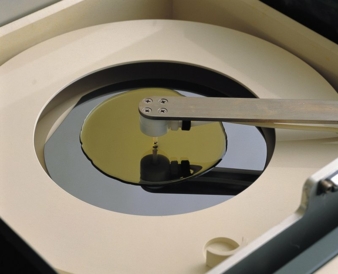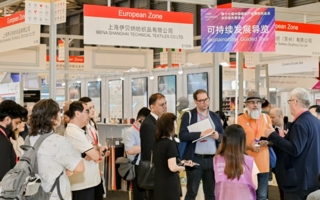09/07/2019 – Toray — auf Deutsch lesen
The future is 5G!
Toray develops low-dielectric-loss polyimide material for electronic components in 5G communications and millimeter-wave radar.
Toray Industries, Inc. announced that it has developed a polyimide material suitable for electronic components used in 5G1 communications and for millimeter-wave radar. 5G is an increasingly popular high-speed, stable communications technology capable of handling large data volumes, and millimeter-wave radar is employed in automated driving and other technologies.
The new Toray material has the heat resistance, mechanical characteristics and adhesive properties typical of polyimides, coupled with the low-dielectric-loss performance that is essential for high-speed communications. It is expected to make a significant contribution to the performance of high-frequency parts in electronic components in these fields.
The new material leverages Toray’s many years of experience in functional polyimide design technologies and precision molecular design driven by an R&D approach of pursuing the ultimate limits.
The low-dielectric-loss polyimide material features high heat resistance and superior mechanical and adhesive properties, and it reduces electrical energy loss ratio (loss tangent) to 0.001 (20GHz). Toray will continue to pursue the potential of the new material with further development efforts, including adding photosensitivity properties and manufacturing the material in B-stage sheet form. The application of the new material will reduce electrical energy loss and also enable the stable high-speed transmission of large data volumes, boost the performance of millimeter-wave radar for distance measurement, and contribute to the miniaturization of components.
5G?
5G is recognized as a next-generation communication technology since it enables high-speed, high-volume and multiple simultaneous access communications, coupled with low delay. In addition to using conventional frequency bands below 6GHz, 5G technologies also require a new frequency band of 20GHz and above, referred to as the millimeter-wave band. One of the challenges facing the commercialization of 5G communications was the development of a material that has the dielectric properties suited to communications at high frequency bands, as well as the heat resistance needed to withstand mounting on semiconductors, and the adhesive properties required to enable to adhere to copper wiring. The same challenges were also being faced with millimeter-wave radar components, uses for which are projected to expand to include safe driving and automated driving technologies, including the detection of pedestrians and the measurement of distance from obstacles.


